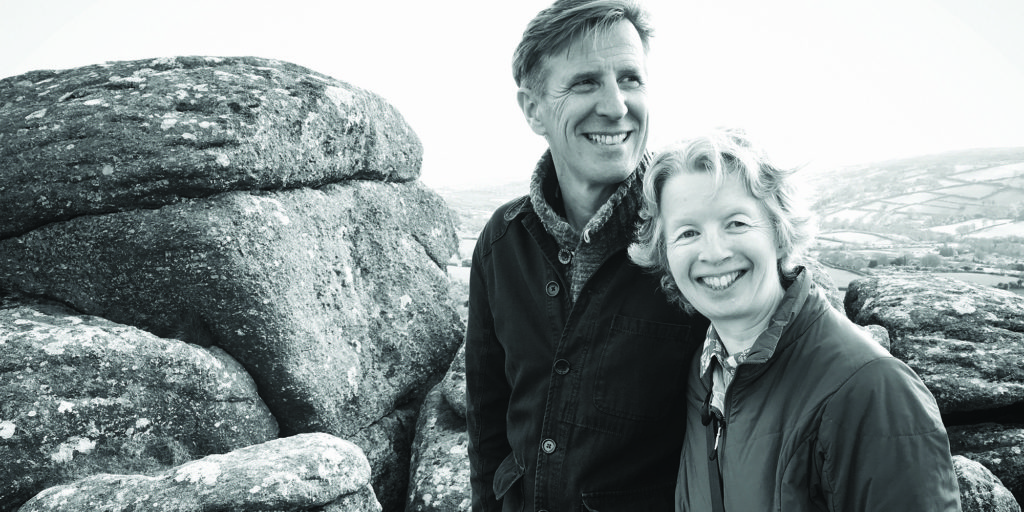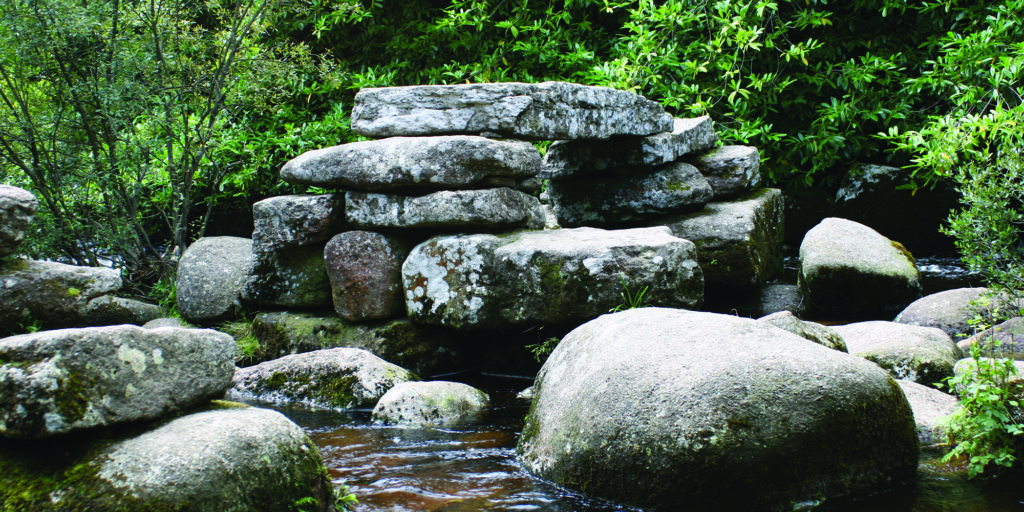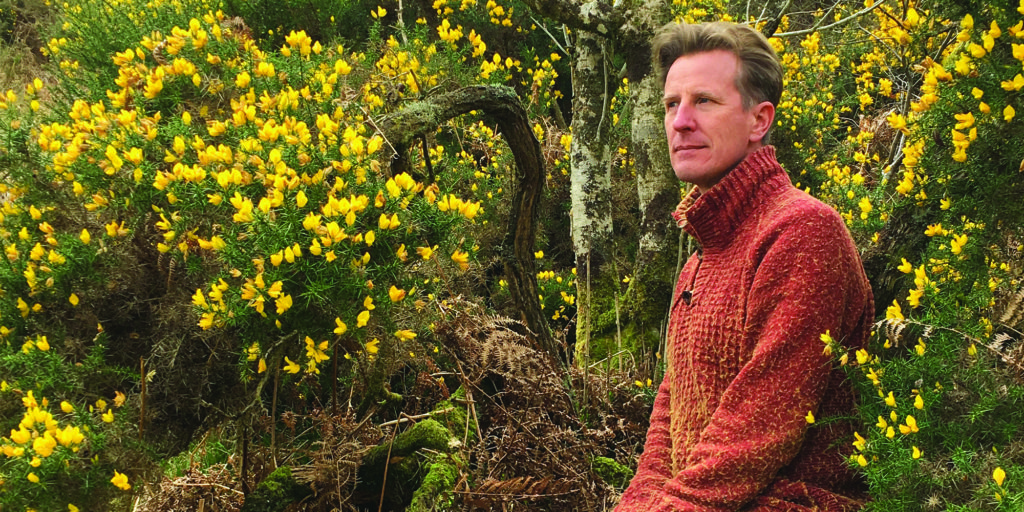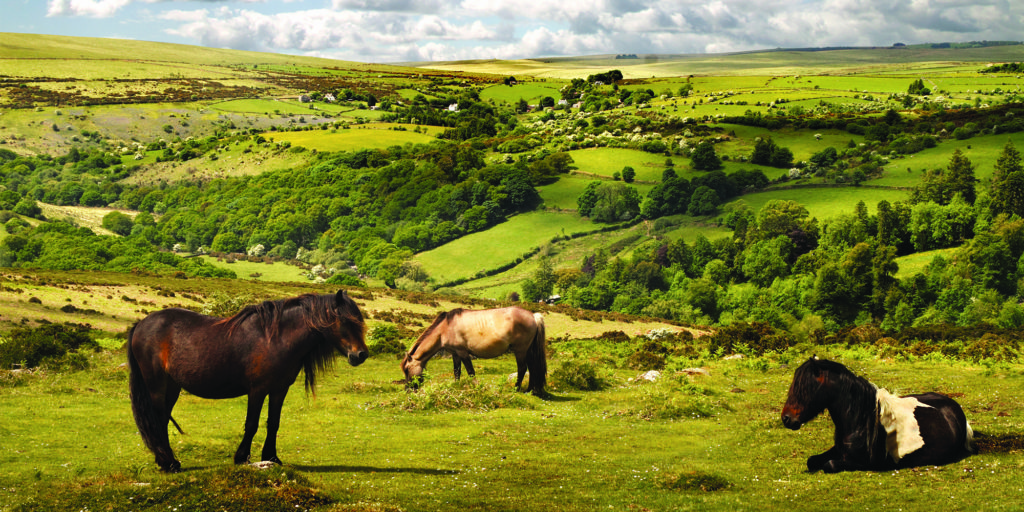

From Hound Tor to Hollywood
We meet Philip Reeve at his home on Dartmoor, and take a revealing peek inside the fascinating mind of this award-winning author.
WORDS BY FELIX ROWE
As I head deeper into the heart of Dartmoor on my very first assignment for Devon Living, I’m excited – if not just a little nervous – at the prospect of meeting my subject, on his home turf. Spring lambs bounce by the roadside, as rock tors rise ominously in my periphery. Taking a moment to absorb the surroundings, I descend the Moor into the village below, passing over a little stone bridge, snaking through a narrow country lane before arriving at my destination; a small farmstead of several cottages and barns. My host’s cottage occupies a tranquil spot in the Devon countryside, with sweeping views of rolling hills dotted with sheep and wild ponies.
“I was a full time freelance illustrator by then so I could pretty much live wherever I wanted… so I wanted to live in the middle of Dartmoor!”
The subject in question is Carnegie Medal winning author Philip Reeve, who has won the acclaim of both critics and readers with his colourful, richly imagined stories, beloved of the young adult audience. His critically lauded masterpiece, Mortal Engines, is currently receiving the Hollywood blockbuster treatment by Universal Studios – due for cinematic release this Christmas. An author operating at the height of his powers, the first in his latest trilogy, Railhead, has been shortlisted for another Carnegie Medal. But even had I expected an ego to match the success, I needn’t have worried; Philip is welcoming, affable and frequently self-effacing, chatting easily over a cup of tea.
Philip lives here on the Moor with his wife, Sarah, and their teenage son, Sam. Today, however, he is accompanied by their poodle, Frodo, who jealously guards the sofa I sit on, eyeing up the digestives conspiratorially.
A gentle humour and mischievous touch run throughout his work. Seemingly his only limitation is his imagination, which just happens to be as vast and vivid as the worlds his characters inhabit. But Philip’s literary career actually began as a freelance illustrator, working on the popular Horrible Histories series, “knocking out 10 or 15 of them every year” throughout the 1990s. Working to a strict brief, there was little opportunity to exercise his fertile imagination. So, in his spare time he put pen to paper, eventually shaping his first proper novel, Mortal Engines.
“It started out as a bit of a hobby really, which writing has always been to me, like having a train set to tinker with on days off… when you can’t get to sleep at night, thinking up storylines and characters. There was never any moment where I thought, ‘I want to be a writer’; it was just something I was doing. Luckily, it sold well enough that the publisher wanted more.”
Like his hero, Tolkien, Philip has that rare knack for creating his own unique universe, fully-formed and entirely authentic in every detail, then furnishing it with interesting and flawed, three-dimensional characters; at once otherworldly yet familiar, futuristic yet grounded within our own reality. He often spends as much time mulling over his characters and their world as he does actually writing, as the journey takes shape in his head.
“I’m always thinking visually, but I think writing is much more filmic than illustrative; it’s much more akin to making a movie in your head than painting a picture…” It’s pertinent, then that just a week later, Philip will visit the New Zealand filmset where legendary filmmaker Peter Jackson and director Christian Rivers are adapting Mortal Engines for the big screen. If anyone can bring Philip’s complex world to life, it’s the multi Oscar-winning crew behind the Lord of the Rings trilogy who did what many said was impossible. You sense Philip’s genuine excitement and anticipation of the results.
The Moor
While Philip originally hails from Brighton, his adopted home holds a magnetic draw over him. “I’ve always liked Dartmoor since I was a child… I remember going to Hound Tor when I was about eight or nine with my parents, and thinking it was the most amazing place I’d ever seen. I loved Dartmoor instantly. Then in my teens I discovered the illustrator Brian Froud’s work, which at the time was very much infused with the spirit of the Moor, reinforcing the notion of Dartmoor in my mind, and giving me the idea that I wanted to be an illustrator.”
With art college beckoning, followed by a burgeoning illustration career, Dartmoor slipped to the back of Philip’s mind. But its draw would prove compelling, and after several holidays staying nearby, Philip and Sarah eventually made the permanent move. “I was a full time freelance illustrator by then so I could pretty much live wherever I wanted… so I wanted to live in the middle of Dartmoor!” In fact, as Philip quips, the guesthouse’s owners have complained they keep losing business as all their returning guests love it so much, they end up simply moving down and becoming neighbours! I can certainly see the appeal of it myself.
“It’s a nice place to work because I can go out and walk, and think.” Yet for someone who has made his name largely for sculpting futuristic landscapes, at first this feels at odds with Dartmoor’s rugged semi-wilderness. Look closer, however, and you’ll see how it has seeped into his work, whether the borrowing of geographic names (lead character, Tom Natsworthy in Mortal Engines) or even the landscape itself, as Philip recounted upon the release of Railhead.
“A few years ago, on my wife’s birthday, we went to Lydford Gorge, on the far side of Dartmoor. It’s a place about as unlike a futuristic industrial city as you could imagine. The River Lyd flows through the deep gorge. There is a famous waterfall called The White Lady, and a beautiful, mossy path leading up through the oak woods, beside the rapids. There’s also a spot called Devil’s Cauldron where the river plunges down into a deep chasm. Some previous landowner bolted metal walkways to the rock-faces so that sightseers could venture closer. The walkways are rusted now and maybe unsafe… But looking at them from the higher path made me think about a whole city built in that way, jutting from vertical cliff faces, half drowned in waterfall spray. Ideas lie in wait for us in the landscape, and they’re not always the ideas that we expect.”
And there are more immediate influences too, such as The Dartmoor Pegasus, a recent instalment from his Reeve and McIntyre collaborative series for early readers. It’s interesting to note how many significant connections in Philip’s life have gone full circle, many of these deeply rooted in the geography of Dartmoor. The other great connection, of course, is his literary influence – growing up on a diet of Tolkien, then years later having his own book adapted for the screen by the very same filmmaker who so successfully adapted Tolkien.
Yet for all these connections, Philip is ever keen to push things forward, refusing to be conveniently categorised into one genre or audience, never one to go stale as a writer. “If you’re going to keep a career going for a long time,” he muses, “it is vitally important that you change every so often and do something different… you have to keep pulling the rug out from under your feet.”
PHILIP REEVE
COMPETITION
Win a selection of books by Philip Reeve, including a signed copy of the critically acclaimed Railhead, featuring an original illustration from Philip himself.
Click here for all the details. Closing date: 23/04/2018
"I was a full time freelance illustrator by then so I could pretty much live wherever I wanted... so I wanted to live in the middle of Dartmoor!"



